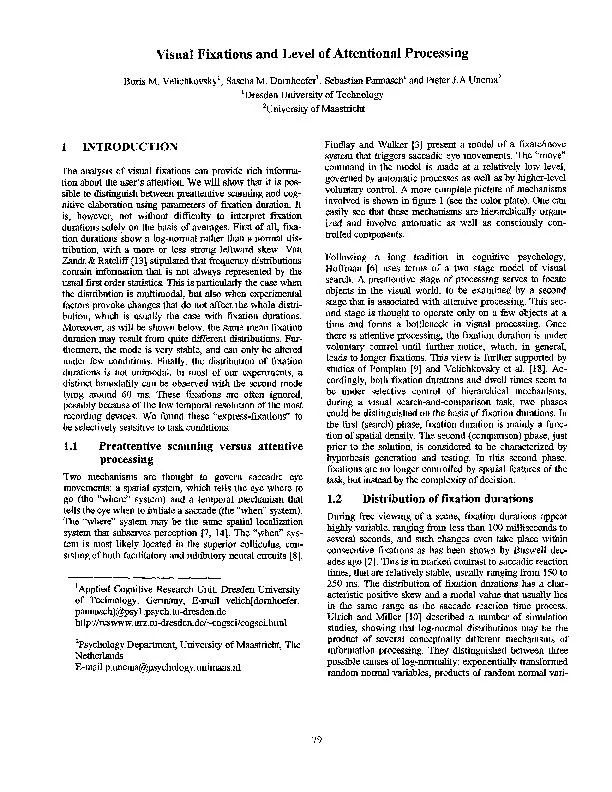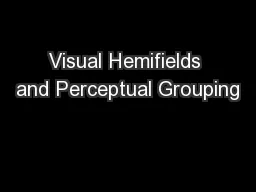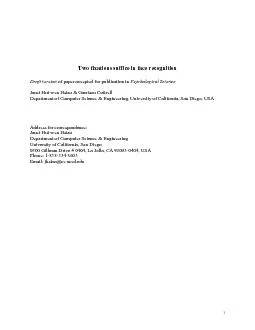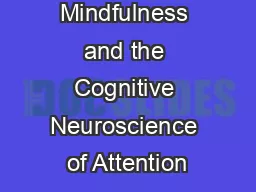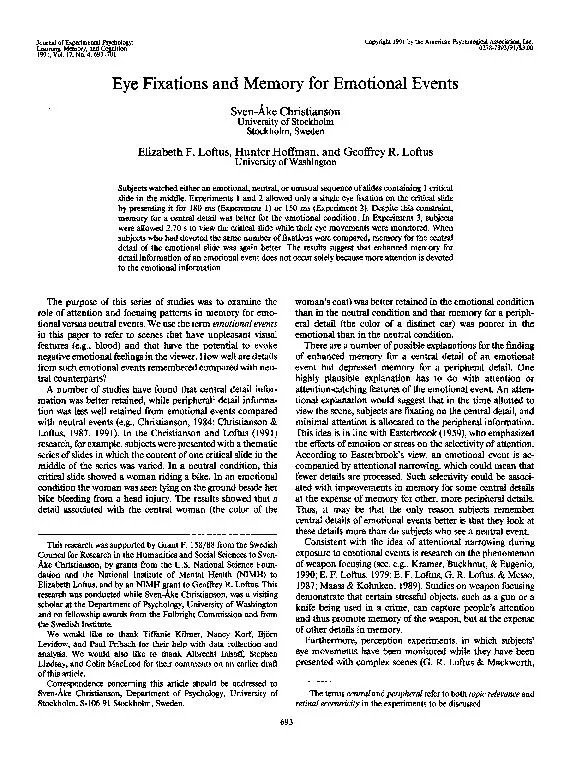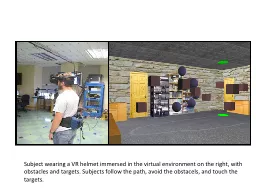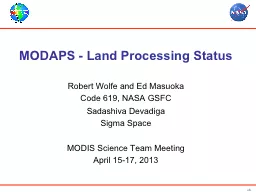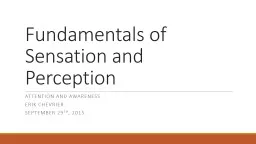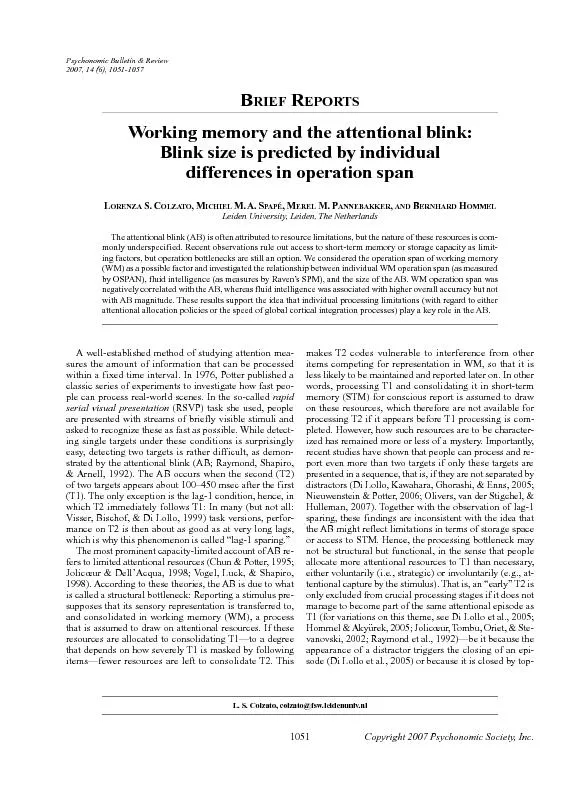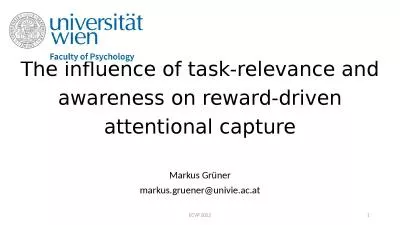PDF-Fixations and Level of Attentional Processing
Author : lois-ondreau | Published Date : 2016-04-15
lvl Velichkovsky 1 Sascha M Domhoefer 1 Sebastian Pannasch and Pieter JAUnema 2 1Dresden University of Technology 2University of Maastricht 1 INTRODUCTION The analysis
Presentation Embed Code
Download Presentation
Download Presentation The PPT/PDF document "Fixations and Level of Attentional Proce..." is the property of its rightful owner. Permission is granted to download and print the materials on this website for personal, non-commercial use only, and to display it on your personal computer provided you do not modify the materials and that you retain all copyright notices contained in the materials. By downloading content from our website, you accept the terms of this agreement.
Fixations and Level of Attentional Processing: Transcript
Download Rules Of Document
"Fixations and Level of Attentional Processing"The content belongs to its owner. You may download and print it for personal use, without modification, and keep all copyright notices. By downloading, you agree to these terms.
Related Documents

